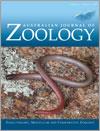We characterised a set of nine polymorphic microsatellite loci for Pleistodontes imperialis sp. 1, the pollinator wasp of Port Jackson fig (Ficus rubiginosa) in south-eastern Australia. Characterisation was performed on 30 female individuals collected from a population in Sydney, Australia. The average number of alleles per locus was 7.33, and eight loci were not in Hardy–Weinberg equilibrium. This was expected as fig wasps are known to be highly inbred. A test of genetic differentiation between two natural populations of P. imperialis sp. 1 (Sydney and Newcastle, Australia – some 120 km apart) yielded a very low FST value of 0.012, suggesting considerable gene flow. Bayesian clustering analysis using TESS 2.3.1, which does not assume Hardy–Weinberg equilibrium, however, indicated potential spatial substructuring between the Sydney and Newcastle populations, as well as within the Sydney population. The described loci were also characterised for two other species in the P. imperialis complex: P. imperialis sp. 2 (Townsville, Australia) and P. imperialis sp. 4 (Brisbane, Australia). Seven and six of the nine loci were polymorphic for P. imperialis sp. 2 and P. imperialis sp. 4, respectively.
How to translate text using browser tools
6 May 2015
Characterisation of microsatellite markers for fig-pollinating wasps in the Pleistodontes imperialis species complex
Timothy L. Sutton,
Caroline Reuter,
Markus Riegler,
James M. Cook
ACCESS THE FULL ARTICLE

Australian Journal of Zoology
Vol. 63 • No. 2
May 2015
Vol. 63 • No. 2
May 2015
population genetics




